It’s been a while since I used a travel agent to plan a trip. But a major travel agent in Belgium posted a deal one can’t refuse in a newsletter in June 2023. Flights from Amsterdam Airport Schiphol to Hong Kong with Cathay Pacific and three nights at the four-star Park Hotel Hong Kong in the Tsim Sha Tsui, Kowloon area. So I messaged Oriol in ‘panic’ and pressured him to decide quickly (as the deal was popular and the the offer limited in time and availability) to come along to this Special Administrative Region (SAR) of the People’s Republic of China. Being four days in Hong Kong, we used one of these days to Macau (also often spelled Macao) the other SAR. We were there in November 2023.
After the Ten Thousand Buddhas Monastery, Oriol needed a coffee fix. Nearby there is a mall, which turned out to be HomeSquare. “HomeSquare is uniquely positioned to serve all your home ware needs. Located in the heart of Sha Tin, it covers more than 350,000 square feet across five floors”, the website says.
“HomeSquare features an exceptional selection of world-class home furnishing brands, it provides you with interior design services, furnishings, household items, kitchen wares, bathroom supplies, lighting and light fixtures, bedding and children’s home goods.”
And on the top floor, there’s an IKEA. And IKEA has a restaurant and a bistro. So we would be able to combine coffee and lunch. Spoiler: we did neither. Instead we saw the MTR ride to Ngong Ping 360 and The Big Buddha on Lantau Island is a 1.5 to two-hour journey. So we started that journey asap.
But before we knew that, we walked through IKEA Shatin (IKEA spells Sha Tin in one word). What is striking about this IKEA is the focus on dealing with very limited living space. That shouldn’t really be surprising, but still. This is especially instructive about how Hong Kong residents live.





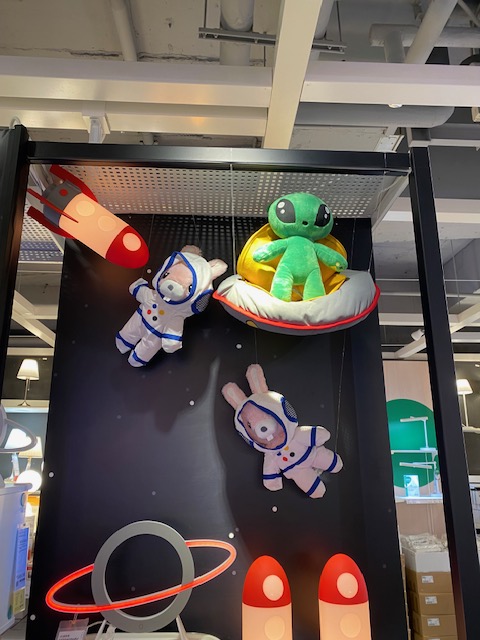
Small spaces
Living in small apartments in Hong Kong is a reality for many residents due to the limited land availability and high population density. While it can be a challenge for some, others adapt to the lifestyle and find ways to make the most of their compact living spaces.
Here are some aspects to consider:
- Space optimalisation. Residents often become experts at maximizing space. Furniture and storage solutions are designed with functionality and space-saving in mind. Multifunctional furniture, such as sofa beds or tables with storage compartments, is common.
- Minimalism. Living in a small apartment may encourage a more minimalist lifestyle. Residents may prioritize essential items and declutter regularly to maintain a comfortable living environment.
- Outdoor spaces. Despite limited indoor space, Hong Kong offers various outdoor areas, including parks, hiking trails, and waterfronts. Many residents use these spaces for recreation and socializing, providing a balance to the constraints of apartment living.
- Community living. The small size of the apartments often encourages people to spend more time outside their homes, fostering a sense of community. Residents may socialize in public spaces, neighborhood parks, or communal areas within residential complexes.
- Location matters. The location of the apartment can significantly impact the living experience. Proximity to public transportation, work, and amenities becomes crucial when living in a compact space. Many residents prioritize convenience over larger living spaces.
- Adaptability. Those who choose to live in Hong Kong often adapt to the lifestyle and come to appreciate the efficiency and convenience that the city offers. The fast-paced urban environment becomes a part of daily life, and people learn to navigate the city efficiently.
- Cost considerations. While small apartments may be a trade-off for some, they often come with lower rental or purchase costs compared to larger spaces. Residents may find that the benefits of living in Hong Kong, such as job opportunities and cultural experiences, outweigh the challenges of limited living space.
Cages
I’m not even tackling the issue of the so-called cages in Hong Kong. The term ‘cages’ in Hong Kong typically refers to a form of extremely cramped and basic accommodation known as ‘cage homes’ or ‘cage dwellings’. These are tiny living spaces that gained attention due to their substandard conditions and the social issues associated with them. Here are some key points:
Cage homes are essentially subdivided units within larger apartments or industrial buildings. These units are divided into small cubicles or cages, each equipped with a bed and some basic necessities. The sleeping space is often enclosed by wire mesh or other makeshift materials, resembling a cage.
The living conditions in these cage homes are often deplorable, with limited privacy, inadequate ventilation, and minimal space for personal belongings. Residents typically have communal access to basic facilities like toilets and sometimes shared kitchens.
Cage homes are associated with low-income individuals who may struggle to afford more conventional housing options in Hong Kong. The residents are often marginalized and face challenges in accessing better living conditions.
The existence of cage homes highlights issues of poverty, income inequality, and the lack of affordable housing in Hong Kong. It has sparked public debate and raised awareness about the need for social welfare programs and improved housing policies.
The Hong Kong government has implemented various measures to address the housing issues faced by low-income residents, including the provision of subsidized housing and efforts to increase overall housing supply.
While cage homes are a stark example of extreme living conditions, the majority of Hong Kong’s population lives in more conventional housing, ranging from small apartments to larger homes. The government and various organizations continue to work towards addressing housing challenges and improving living conditions for all residents.
10 m² per person
IKEA mostly focuses on the middle class residents of Hong Kong. As with every IKEA I visited in Belgium, the Netherlands and Switzerland, the tour starts with examples of homes and interior layouts.
While in the European IKEA stores you will see examples of big dining rooms and dining tables, living or sitting rooms and kitchens, the sizes shown in Sha Tin are smaller. Tables are foldable.
I did an ‘apartment tour’ in the IKEA of a typical public housing space of 325 square feet or just over 30 m². A space for a family of three to four. So two parents and one or two children.
The most common type of housing in Hong Kong is apartments, and the average size of an apartment can range from around 400 sq ft (37 m²) to 800 sq ft (74 m²). However, there are smaller and larger units available depending on the area and the building.
The Hong Kong government provides public housing to a significant portion of the population. These public housing units are generally smaller, with sizes ranging from around 200 sq ft (18,60 m²) to 500 sq ft (46,45 m²). They are designed to accommodate the housing needs of lower-income residents.
Private housing, including condominiums and private apartments, can vary widely in size. Some luxury apartments in prime locations may have larger floor areas, but they are often the exception rather than the norm.
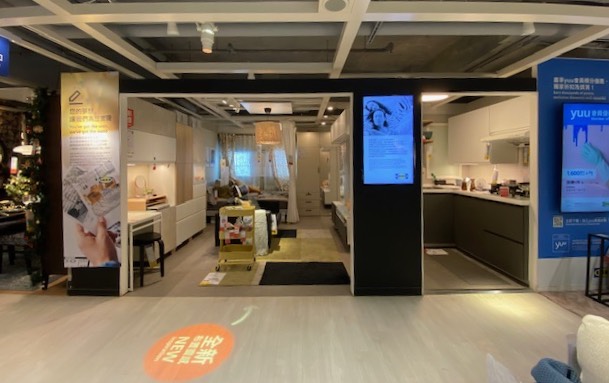
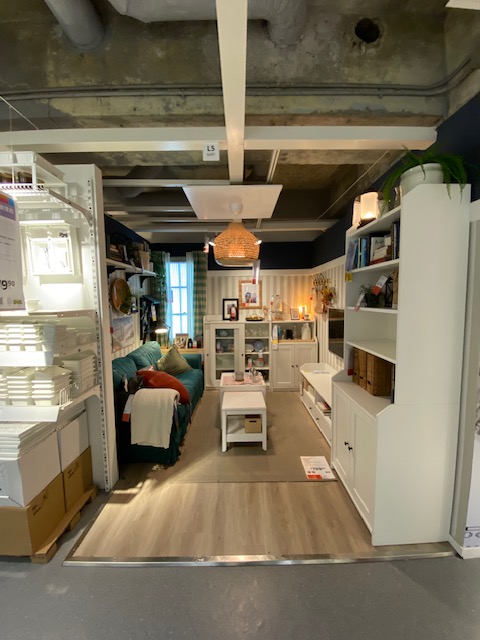
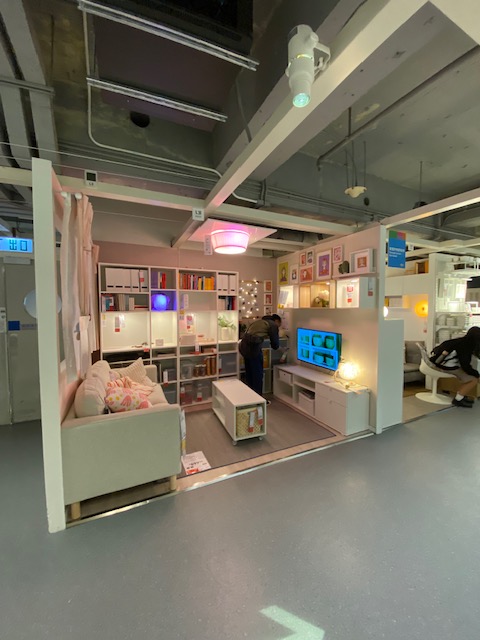
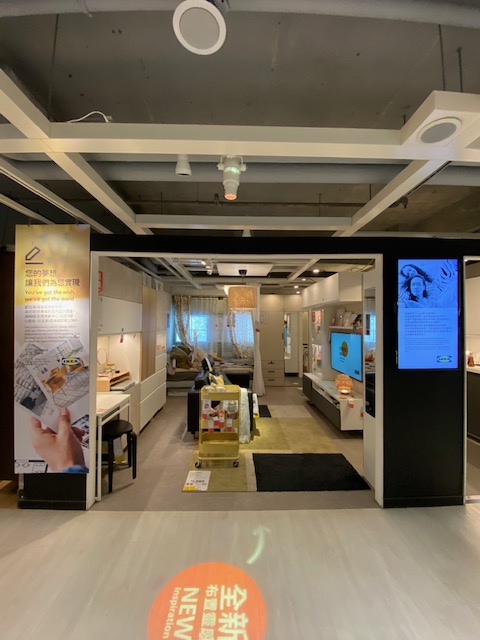
Comparing to Belgium
The average size of an apartment in Belgium can range from approximately 55 m² to 90 m² or 600 to 1,000 square feet. Larger or more luxurious apartments may exceed this range.
Terraced or row houses in Belgium typically have an average size of around 90 m² to 140 m² or 1,000 to 1,500 square feet. Again, this can vary based on the specific property and location.
The average size of a detached house might fall within the range of 140 m² to 230 m² (1,500 to 2,500 square feet) or more. Larger properties with more extensive grounds may exceed these figures.
Villas and larger properties, especially in suburban and rural areas, can have significantly larger sizes, ranging from 230 m² (2,500 square feet) to several hundred square meters.
So?
I found our little visit to the IKEA insightful. Interesting enough to milk a blog post out of it. I love IKEA. I love its designs, its minimalism, its presentations. I was impressed on how they cater to the Hong Kong reality.
Hong Kong & Macau 2023
- REVIEW | Cathay Pacific Airbus A350 in Economy – Amsterdam Schiphol to Hong Kong.
- HONG KONG | Tsim Sha Tsui – Golden Mile & Nathan Road – Kowloon Park – Sneaker Street & Fa Yuen Street Market – A Symphony of Lights – Temple Street Night Market.
- REVIEW | Park Hotel Hong Kong in Kowloon.
- HONG KONG ISLAND CENTRAL DISTRICT | Man Mo Temple – Lan Fong Yuen – Central–Mid-Levels escalator – Victoria Peak & Peak Tram – tram – Victoria Park – Star Ferry.
- Gay Hong Kong.
- REVIEW | TurboJet high-speed ferry from Hong Kong to Macau.
- Macau.
- MACAU GRAND PRIX | Trying to catch glimpses of the Guia Circuit, Formula 3 and GT cars.
- CATHAY PACIFIC | Free In-town Check-in Service at MTR’s Hong Kong Station and Kowloon Station.
- HONG KONG | Ten Thousand Buddhas Monastery.

3 Comments Add yours